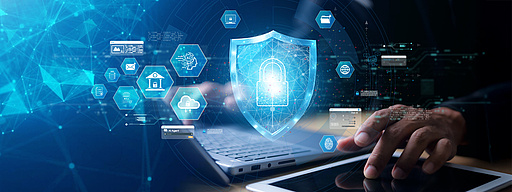
The show must go on!
When it comes to event technology, many people think primarily of concerts, lighting and sound technology. But IT systems are playing increasingly important roles in business events such as customer, investor and industry conferences where serious, even legal, consequences can ensue if technology does not work properly. UEM can help avoid potential problems and optimize system security, performance and reliability.
In short
- Increasingly sophisticated event technology requires extensive IT support.
- Data protection and cybersecurity are particularly critical.
- Repeated manual configurations and fixes are time-consuming and inefficient.
- UEM can help ensure successful events with reliable and secure system management.
Whether it’s a summer open-air concert, an industry trade show, or an important corporate event, increasingly sophisticated technology is being used for lighting, sound, ticket sales, attendee registration, security and many other areas. Not surprisingly, those systems require extensive IT management and support. Ensuring that the underlying technology is secure and reliable not only helps ensure positive experiences for attendees, it also prevents potentially serious reputational, financial or even legal consequences from system problems.
Tech problems can lead to higher costs, cancellations, and worse
For example, consider the possible impacts of IT problems at a company’s online or face-to-face annual general meeting (AGM), customer or user group event, or industry
conference.
If hackers managed to disrupt, disable or compromise IT systems, the event could be interrupted or even canceled. Unplanned costs would likely be incurred for remediation, recovery
and rescheduling. The fallout also could result in lost or delayed sales, a loss of customers to other vendors, and long-term damage to the company’s reputation.
UEM as a solution for effective device management
That’s why IT teams are needed for planning and conducting an event. That begins with the technology and resources to set up, protect, maintain and optimize event IT
systems. The team may also need to delete all system data and configurations at the end of the event, then restart the process for the next event.
All of that work involves tablets, laptops, smartphones, displays, kiosks, demo stations and other endpoints that are playing an increasingly important role at many
events.
Efficient device management and security at events
Unified Endpoint Management (UEM) has proven to be extremely useful in overcoming the complexities and challenges of running event technology:
- Simplified device management and configuration: UEM enables IT admins to centrally configure and manage variety of endpoint devices consistently to ensure that everything
fulfills its intended purpose and that the event runs smoothly.
- Security and privacy: At some events, organizers present sensitive corporate information and process the personal information of attendees and speakers. UEM provides a
robust security infrastructure to protect endpoints and prevent data leaks. Encryption and strict access controls managed with UEM can ensure that information remains secure during the
event and is only accessible to authorized individuals. Personal safety and security also plays an important role, so that in the event of a fire, physical intrusion or other emergency,
protective measures and the ability to alert first responders and other resources will not be compromised.
- Remote support and diagnostics: Technical problems during an event may require immediate attention. With UEM, IT admins can monitor, diagnose and fix issues remotely.
They can also perform troubleshooting and other needed actions from multiple devices simultaneously to minimize downtime and increase event efficiency.
- Real-time updates and instructions: UEM allows IT admins to send important updates or instructions to attendees' devices during the event. For example, at our baramundi
AGM, this could include information on meeting locations, agenda changes or related messages and updates. This allows attendees to stay up-to-date, vote on important corporate matters
described in a proxy statement, and participate productively.
- Mobile app management: Events often use purpose-built mobile apps to provide a better experience for attendees. UEM enables technicians to centrally manage these apps,
deploy updates and troubleshoot issues. They can also control access rights for specific features, ensure app security and monitor stability.
- Cost optimization: By centrally managing endpoints and enabling secure remote control, organizers can reduce the costs of managing and maintaining event systems. UEM also improves efficiency as IT teams can managing multiple devices simultaneously.


